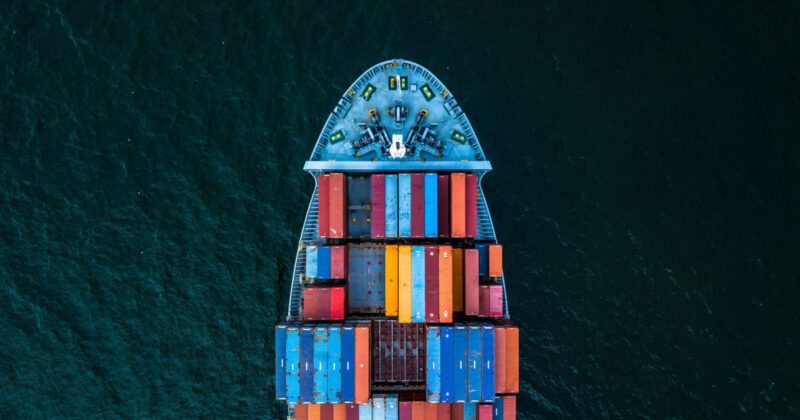
Incoming capacity poses fresh challenges for ocean freight

After posting record profits for the last two years, container lines are now facing a new challenge. With more ships due for delivery over the next two years, how will they manage capacity and rates in the face slowing demand?
As global inflation dampens confidence and output, any remaining consumer spending is reverting to pre-pandemic norms, with expenditure shifting from products back to services such as tourism and dining out.
Political instability, rising production costs - not least due to soaring energy costs - and subsiding consumer confidence and economic growth rates are clearly impacting demand. The combination of a lowered demand, along with growing capacity, has led to a drop in rates.
“With the downward shift in market rates, it is crucial to provide our customers with the best solutions to optimize their costs in the months to come,” said Kelvin Leung, CEO, DHL Global Forwarding Asia Pacific.
The liner challenge
At the start of the year, shipping companies have placed record levels of new orders for container vessels. The aim was to introduce new capacity, though it would only be available in 2023, and relieve pressure on rates that have been building up over the past year.
However, the market situation has changed, with various events such as war in Ukraine, the energy crisis and inflation leading to lowered consumer spend, and thus demand in goods.
Containers lines are now facing a potential challenge on the supply-side, where overcapacity could impact profits. A total of 7.3 million twenty-foot-equivalent unit (TEU) of newbuilding capacity, representing 28.3 percent of the existing cellular fleet, is expected to hit the market by the end of 2025, according to shipping analyst firm Alphaliner.
“The years 2023 and 2024 alone will see a total of 5.1 million TEU of newbuilding tonnage joining the fleet, with 2.3 million TEU expected next year and 2.8 million TEU due in 2024,” reported the analyst. “By comparison, the containership fleet is expected to see only about 1.1m TEU of new capacity hitting the water in 2022, about the same as in the year before.”
The current fleet has an average age of less than 14 years, so scrapping is likely to be subdued, although some capacity will be effectively taken out of the market due to impending IMO carbon regulations which will force ships to slow down to reduce emissions.
All this means that a huge number of new large containerships are going to hit the water in 2023 at a time of stagnating demand. Tonnage supply could potentially outstrip vessel demand again next year and the liner shipping market might be headed towards structural overcapacity.
“There is no doubt that we are moving towards a period in container shipping in which overcapacity is the chief challenge for carriers,” said Dominique von Orelli, Global Head, Ocean Freight, DHL Global Forwarding. “Hopefully, liners will take action to reduce empty slots, and look at improving service reliability for their customers.”
Continuing disruptions in China due to Covid-19
While port-related congestion issues in Europe and the U.S. have lessened, supply chain disruptions are continuing in China with its zero Covid-19 policy still in place. China’s Communist Party concluded its 20th National Congress in October but hopes that this might see a significant easing of the pandemic-driven restrictions have already been dashed. A much anticipated State Council press conference on 7 November saw officials reaffirm that China would be sticking to the strict policy that continues to dampen both international trade and China’s own economic growth.
“We are closely monitoring the situation in China, and hope to see some loosening of the restrictions by next year. This would allow manufacturers to plan production and deliveries more efficiently. It would also boost growth and confidence in the important Chinese domestic market,” added Leung.
Economic outlook
The latest October PMI surveys signaled that the downturn in global economic activity is showing no sign of relenting. The J.P.Morgan Global Composite Output Index fell to 49.0 in October, from 49.6 in September, its lowest reading since June 2020.
Business optimism dipped to a 28-month low, reported J.P.Morgan, as “new order intakes and international trade flows continued to dwindle in the face of heightened economic, inflationary and political pressures”.
Bennett Parrish, Global Economist at J.P.Morgan, added: “With demand weak, geopolitical and market volatility high, and inflationary pressures still elevated, the growth outlook remains downbeat for the remainder of the year.”
Financial analyst firm S&P Global noted that the rate of decline for the eurozone economy was the fastest since April 2013 barring pandemic lockdowns, with manufacturing, and energy intensive sectors reporting the steepest output losses. Germany reported the sharpest economic contraction while growth in France “merely stalled”.
Chris Williamson, Chief Business Economist at S&P Global Market Intelligence said: “The eurozone economy looks set to contract in the fourth quarter given the steepening loss of output and deteriorating demand picture seen in October, adding to speculation that a recession is looking increasingly inevitable.”
The U.S. economy is also struggling with manufacturing activity growing at its slowest pace. The Institute for Supply Management (ISM) reported that its U.S. manufacturing PMI fell to 50.2 in October 2022 from 50.9 in September 2022, both the lowest readings since May 2020.
Shifting rates
Traditional peak season barely materialized in 2022 and many industry observers feel that the slump is structural, rather than seasonal. These economic headwinds, and ongoing Covid-19 restrictions, have combined to impose heavy downward pressure on freight. Although uneven, the pressure is being felt globally.
Across many trade lanes, cargo volumes are weakening, according to the November DHL Ocean Freight Market Update. The end result? Spot freight rates are projected to move back to pre-pandemic levels.
The question that remains is whether there are signs of rates normalization in the near future.










 English
English